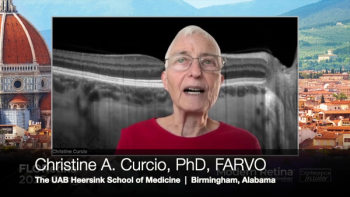
Intracameral mydriatic delivery: simplifying the process
Intracameral mydriatic delivery greatly simplifies cataract surgery.
Intracameral mydriatic delivery greatly simplifies cataract surgery, according to Anders Behndig and colleagues from Umeå University Hospital, Sweden, speaking at the update on drug delivery systems symposium.
Dr Behndig noted that topical administration of cyclopentolate and metaoxedrine as a regimen for mydriasis prior to a cataract procedure has some putative disadvantages, including slow penetration through the cornea resulting in a slow onset of the mydriatic effect and an increased risk of cardiovascular side effects. In addition, topically administered mydriatics tend to wear off during the operation.
Dr Behndig and his team tested an alternate mydriatic regimen using intracameral (ICM) injection mixed with lidocaine given at the start of the procedure. A cocktail of cyclopentolate 0.1%, phenylephrine 1.5% and xylcaine 1% was initially used, however the team later discovered that cyclopentolate could be omitted to provide a shorter duration for the mydriatic effect.
This new method reduces preoperative waiting time as well as reducing doses of the mydriatic drugs, thereby lowering the risk of systemic side effects. Using ICM, the pupils reach 95±3% of their maximum size within 20 seconds after injection. Although the average initial pupil size is slightly smaller compared to that achieved with topical mydriatics, the ICM pupils continue to enlarge throughout the procedure, unlike topical mydriatic pupils, which generally contract.
Furthermore, ICM does not induce any additional inflammation or corneal endothelial cell loss, does not increase the surgical time or complication rates and does not impose any cardiovascular risk. ICM can also be used to re-dilate pupils that contract during surgery, which is particularly beneficial for patients with floppy-iris syndrome.
After using ICM in several thousand patients since 2003, Dr Behndig believes it is an effective and safe method for mydriasis and greatly simplifies cataract surgery routines.
Newsletter
Get the essential updates shaping the future of pharma manufacturing and compliance—subscribe today to Pharmaceutical Technology and never miss a breakthrough.








































